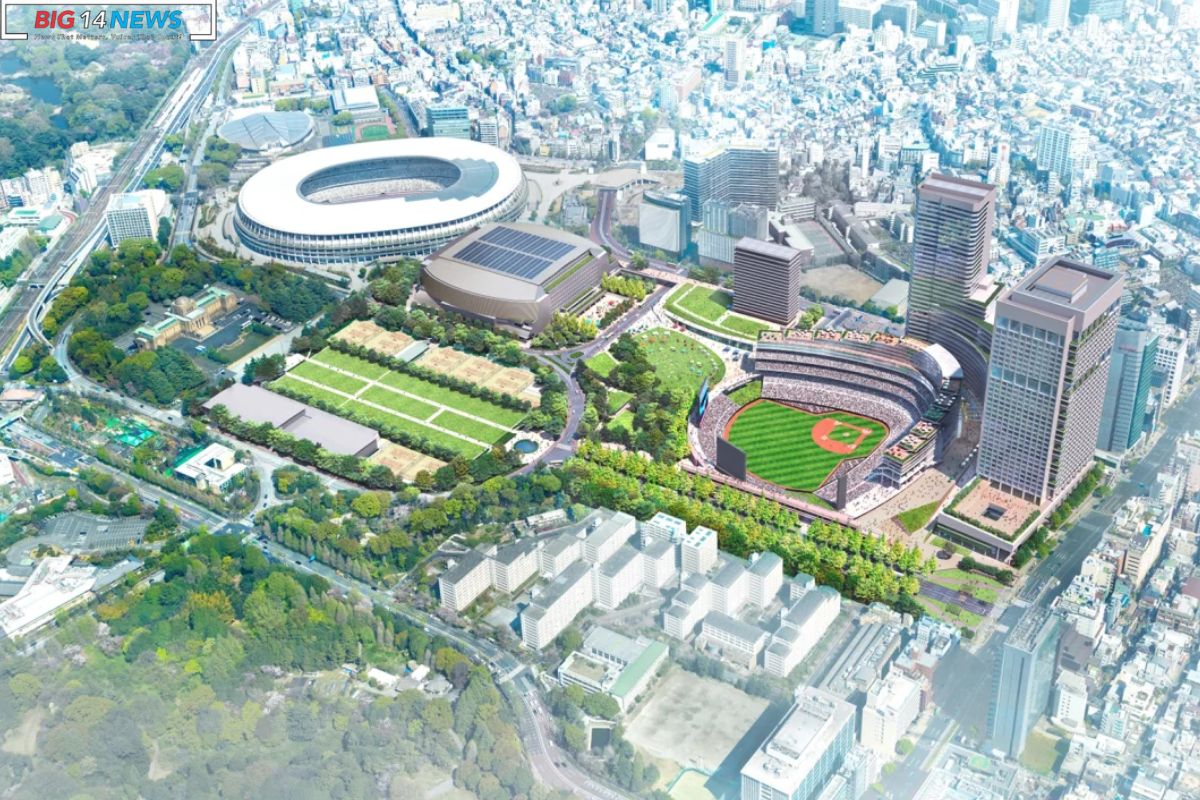Meiji Jingu Gaien: Hiroshi Ono in Tokyo was outraged by plans to change Meiji Jingu Gaien, the beloved “outer garden” of Meiji Shrine. This park in Tokyo is next to the historic Meiji Shrine, built for Emperor Meiji. Century-old Ginkgo trees line Ginkgo Avenue in Meiji Jingu Gaien.
Tokyo approved a $2.3 billion plan to redevelop the land in February. The plan involved demolishing and reconstructing old hotels, skyscrapers, and stadiums. Despite developer promises to protect ginkgo trees, public anger persists. Over 225,000 people signed a petition, prompting ICOMOS to issue a “heritage alert.”
Critics argue that the project’s profit-oriented approach contradicts the commitment to maintaining Jingu Gaien as a public area. Proponents say that rebuilding is essential for funding operations.
The conversation focuses on the park’s cultural importance and the need for legal protections to safeguard Tokyo’s green spaces. Campaigners want to renovate stadiums instead of demolishing and constructing new ones. They highlight the cultural value of this long-standing tradition. They oppose the “scrap and build” approach to Japanese construction and seek a more democratic decision-making process for the park’s future.
This plan sparks discussion on preserving cultural assets in evolving cities.
The future of Jingu Gaien is at risk due to a conflict between progress and tradition. This makes us ponder the importance of our past culture in the modern world.
ALSO READ: Itsukushima Shrine in Japan: Preserving Beauty Amidst Tourist Challenges
Also Read: Anya Taylor Joy Unique Wedding Dress: Breaks Tradition with Dior Elegance
Our Reader’s Queries
What is Meiji Jingu shrine known for?
Meiji Shrine, also known as Meiji Jing?, is a Shinto shrine located in Shibuya, Tokyo. It honors the spirits of Emperor Meiji and Empress Sh?ken. It’s important to note that the shrine does not house the emperor’s grave, as that can be found at Fushimi-momoyama, south of Kyoto.
What to do in Meiji Jingu Gaien?
Near Meijijingu Gaien Jingu Second Stadium, there are plenty of activities to enjoy. From the annual Jingu Gaien Fireworks event to exploring the Tsubakuro House, there is something for everyone. If you’re looking for a unique experience, consider taking a cooking class at Cooking Sun Tokyo or Japanese Cooking Class Tokyo, Musubi Cooking Class. For those interested in history and culture, the Japan Olympic Museum and Meiji Memorial Picture Gallery are also worth visiting. And don’t forget to check out the Statue of Kano Jigoro for a dose of local history.
Is Meiji Jingu worth visiting?
Tourists and Shinto worshippers alike flock to the shrine for its daily rituals, stunning design, and beautiful surroundings. Built in 1920 to honor Emperor Meiji and Empress Shoken, the shrine’s modern architecture and serene atmosphere make it an unforgettable and refreshing place to visit. Even for youngsters, the shrine offers a unique and peaceful experience that leaves a lasting impression.
Is Meiji Jingu Shinto or Buddhist?
Meiji Jingu stands as a prominent Shinto shrine in Japan, boasting a sprawling 70 hectares of forested land nestled in the heart of bustling Tokyo.

